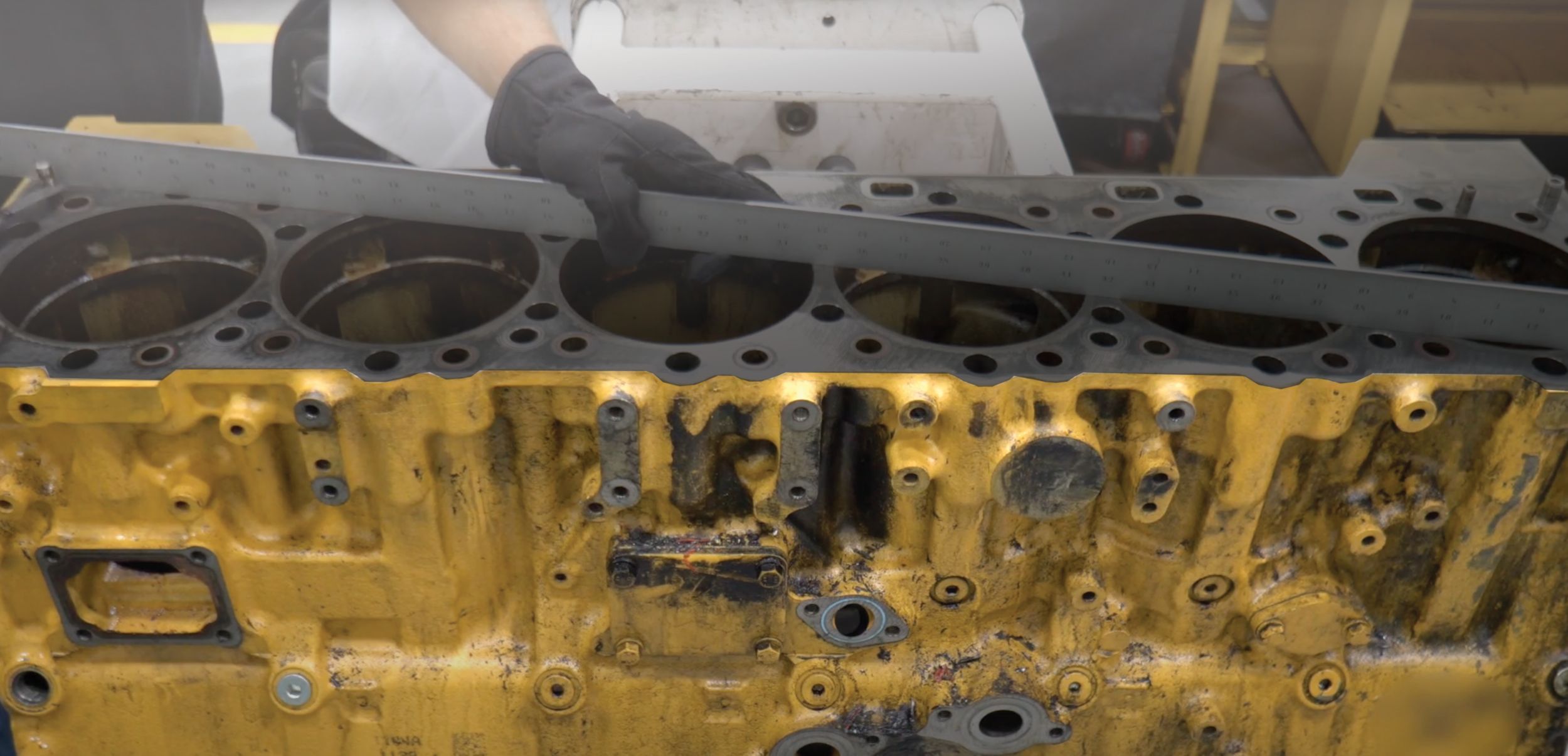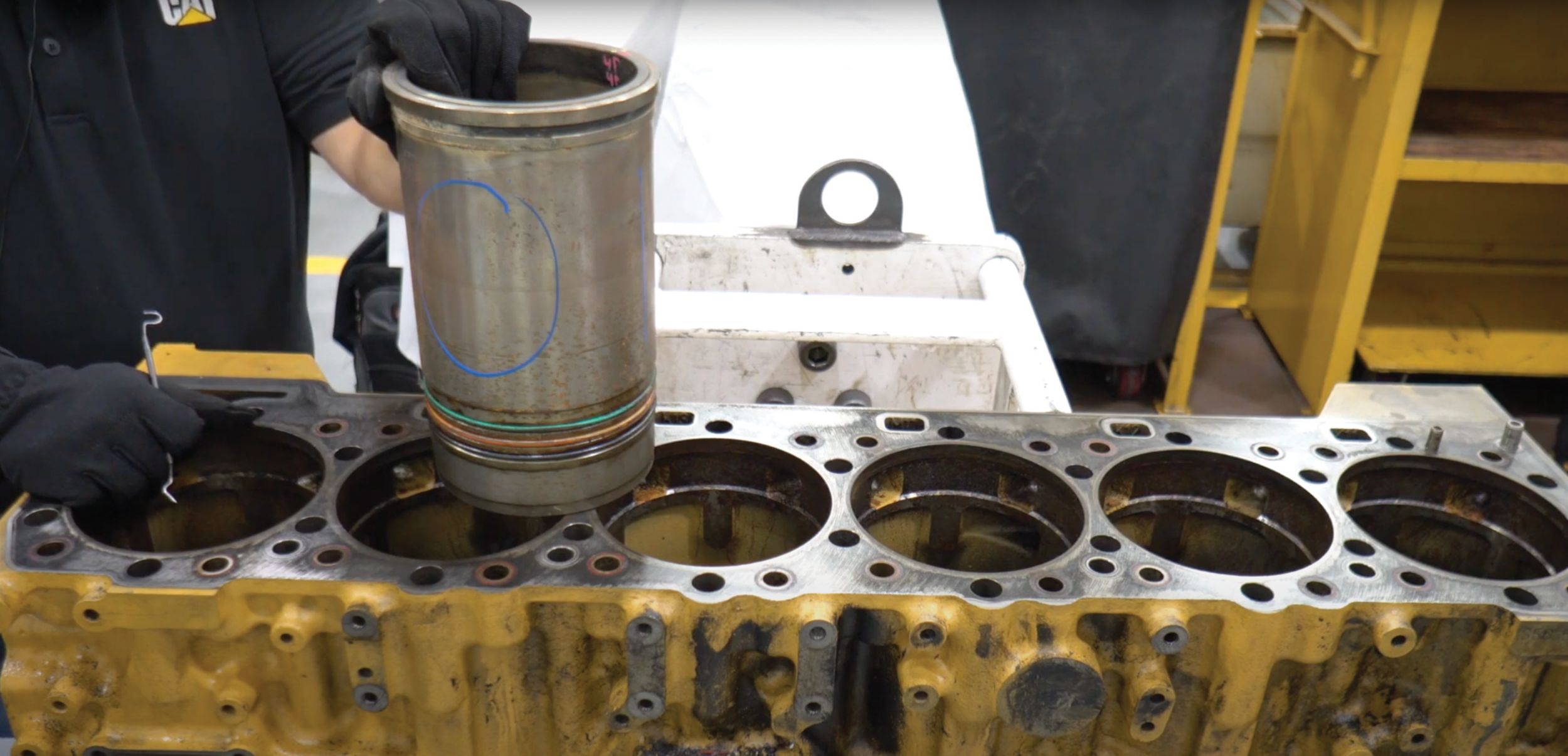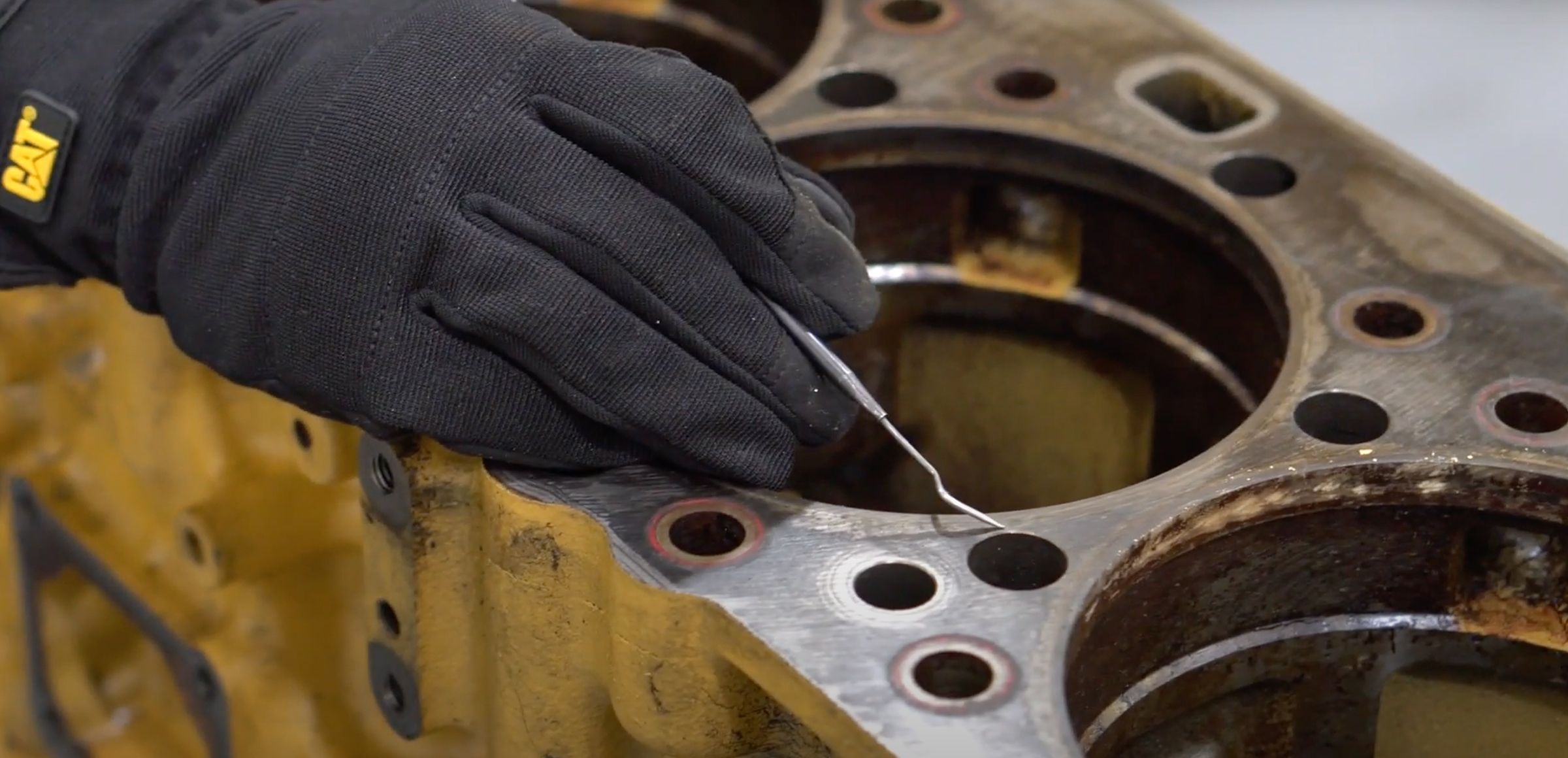If you already have an existing account with another Cat App, you can use the same account to sign in here
One Account. All of Cat.
Your Caterpillar account is the single account you use to log in to select services and applications we offer. Shop for parts and machines online, manage your fleet, go mobile, and more.
Account Information
Site Settings
Security
3 INSPECTIONS THAT HELP
ENSURE A LONG LASTING
TRUCK ENGINE REBUILD
A rebuild is a smart way to make the most of an investment in a Cat® on-highway truck engine. Follow these helpful inspection tips to make sure your rebuilt engine lasts and performs like new.
STEP ONE: TOP DECK INSPECTION*
One of the most common rebuild mistakes is failing to inspect the cylinder block properly. Skipping this step can lead to premature cylinder head gasket failure as well as block damage, and it’s especially important if you’re on your second or third overhaul or have a high-mileage engine.
- Remove the cylinder head, spacer plate and liners.
- Thoroughly clean the block. Make sure no debris gets in the casting holes, which could contaminate the cooling and lubrication systems.
- Check and clean all bolt holes. Again, ensure there’s no debris or foreign material or you won’t get proper torque when replacing the cylinder head.
- Check the deck surface for straightness from corner to corner and between cylinders.
- Look for erosion and cracks around the cylinder liner holes.
If your block is clean, straight and free of cracks or erosion, you’re ready for step two. If not, you’ll need to perform a counterbore cut first. Specs are available on SIS.cat.com or you can ask your local authorized Cat dealer, who can walk you through your repair options if you can’t salvage the block.
Watch a Top Deck Inspection

STEP TWO: LOWER COUNTERBORE INSPECTION*
Next up is inspecting the engine liners and lower counterbore.
- Remove the liners, using a proper liner removal tool — not a hammer.
- Inspect the liner surfaces for erosion or cavitation.
- Check the lower counterbore surface for pitting and erosion, which usually develop near the lower liner seal.
If there’s no pitting or erosion, move to step three. Otherwise, epoxy or machine the area to smooth out the surface, which will help prevent leaks into the oil pan and excessive liner movement.
Take a Look at a Lower Counterbore Inspection

STEP THREE: LINER PROJECTION MEASUREMENT*
The final step before starting your rebuild is measuring liner projection — how far the liner extends above the spacer plate on top of the cylinder block. If it’s not correct, the question isn’t if your head gasket will fail, but when.
- Put in a new spacer plate and spacer plate gasket and set in the cylinder liners without seals.
- Set up your liner projection tool (you can get one from your authorized Cat dealer) and zero out the dial indicator along the liner flange.
- Check projection in four areas around the liner. Measurements can vary from left to right and front to back, and allowable variations differ for new, Cat Reman and previously counterbored blocks. All specs are available on SIS.cat.com or from your Cat dealer.
- Confirm you’re within specs on all cylinders across the block and ensure one side is not higher or lower than the other. If it is, you won’t have enough clamping pressure when you torque down the head.
Now you’re ready to install the liners permanently and get started with on a successful Cat on-highway truck engine rebuild.
See how liner projection measurement works

If you don’t have the proper tools or aren’t comfortable performing these inspections yourself, your authorized Cat dealer can help. Or you can choose Cat Reman engines and long blocks, which are already set up with the proper specifications. For more technical tips and how-to videos, check out the Cat On-Highway Truck Engine Playlist on YouTube.
*These inspections apply to 3406A/B/C/E, C-15, C-16, and C15 engines.

